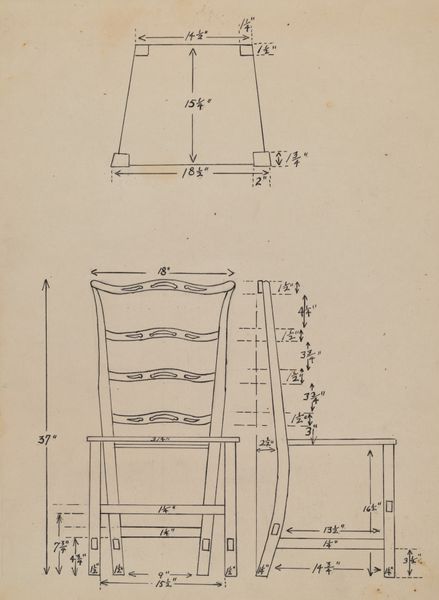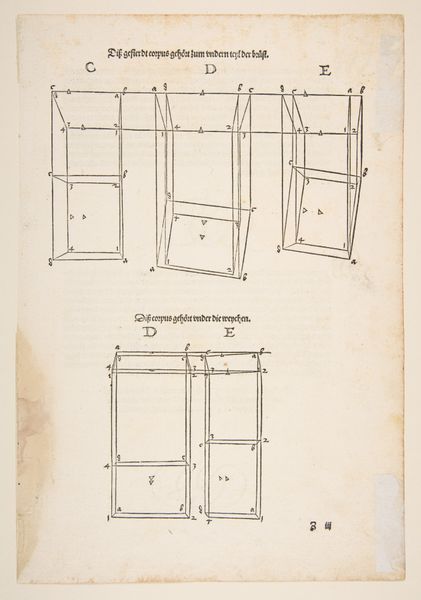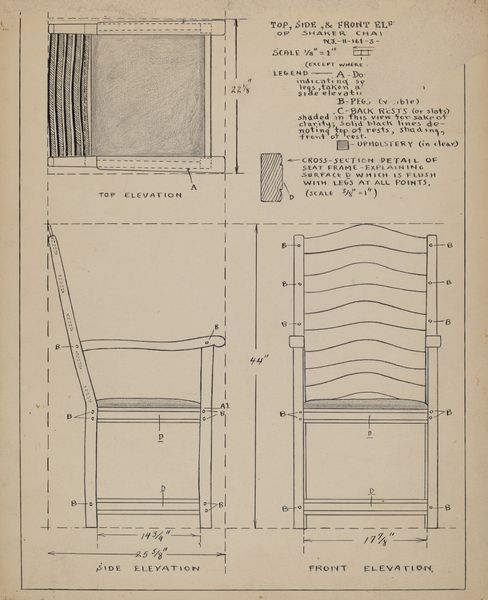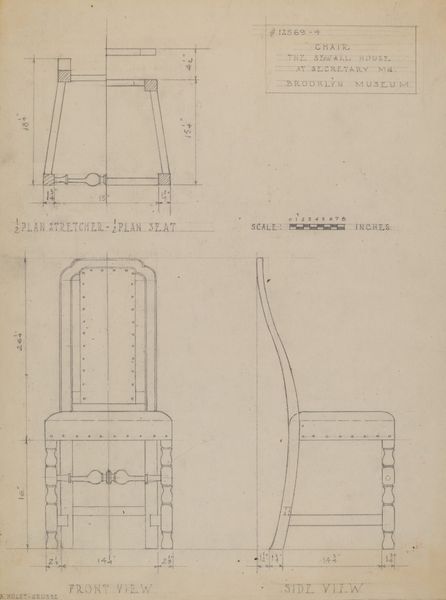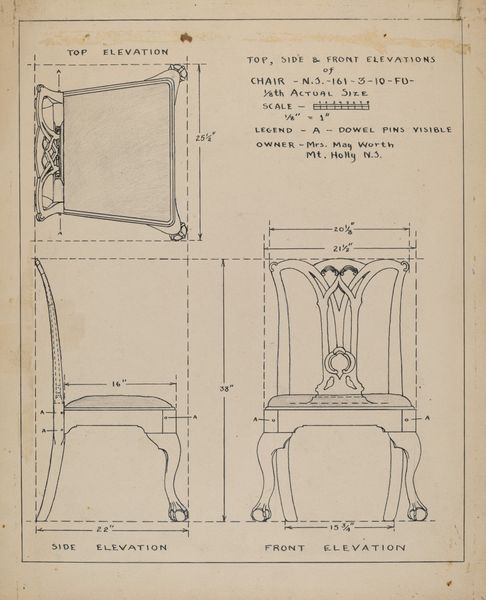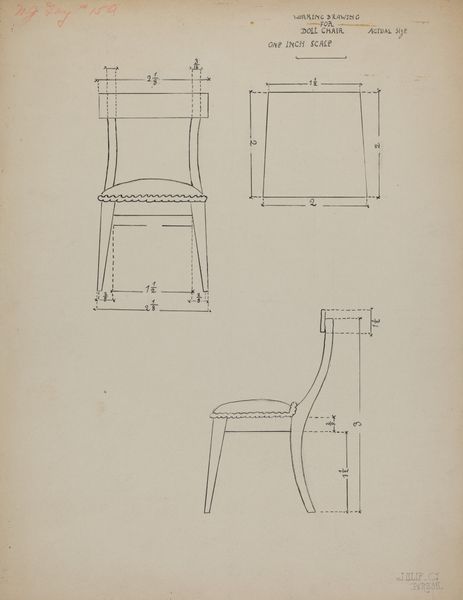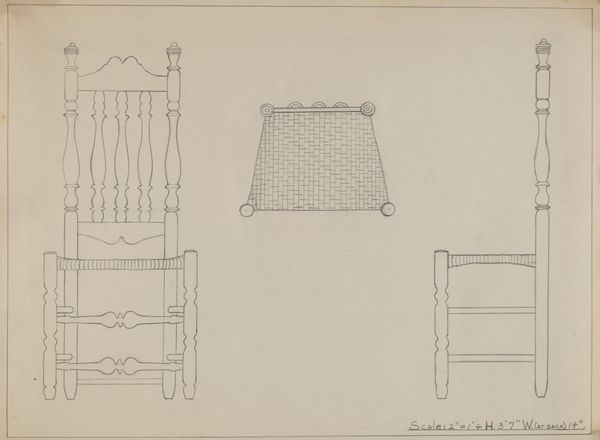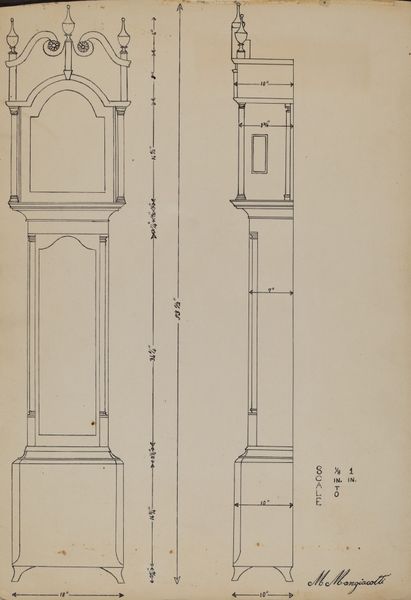
drawing, paper
#
drawing
#
paper
Dimensions: overall: 26.9 x 21.4 cm (10 9/16 x 8 7/16 in.) Original IAD Object: 130cm high, 58 cm wide
Copyright: National Gallery of Art: CC0 1.0
Curator: Here we have a drawing titled "Armchair," likely from around 1937, created by Frank Wenger. The medium is listed as drawing on paper. Editor: It's a very technical drawing, almost like a blueprint. I'm struck by the stark lines and the way the artist presents the chair from multiple angles. What can you tell me about this piece? Curator: Focus on the form itself. Observe how Wenger has employed line to delineate the object’s volume and planes. Note the contrasting presentation of the object. Editor: Yes, I see that; there are three views – a frontal, a side, and then an overhead. Is there a reason for the three distinct viewpoints? Curator: The interplay between these views creates a comprehensive understanding of the chair's design. What sort of structure does this multi-view portrayal impose on our perception? How does it influence the work's aesthetic, its function? Editor: It allows me to appreciate the craftsmanship in its entirety. I’d overlooked the slight curvature in the side view previously. It really changes the visual dynamic of the chair as a whole. Curator: Indeed, this emphasis allows the eye to deconstruct the chair, isolating each plane as a semi-abstract segment, each exhibiting unique internal features and relational positioning to its neighbors. This shifts its design beyond functional art, prompting visual examination of each element and component independently. Editor: It is fascinating how deconstructing the visual planes impacts my perception! I see the chair’s shape and form now in a new, compelling, light.
Comments
No comments
Be the first to comment and join the conversation on the ultimate creative platform.


